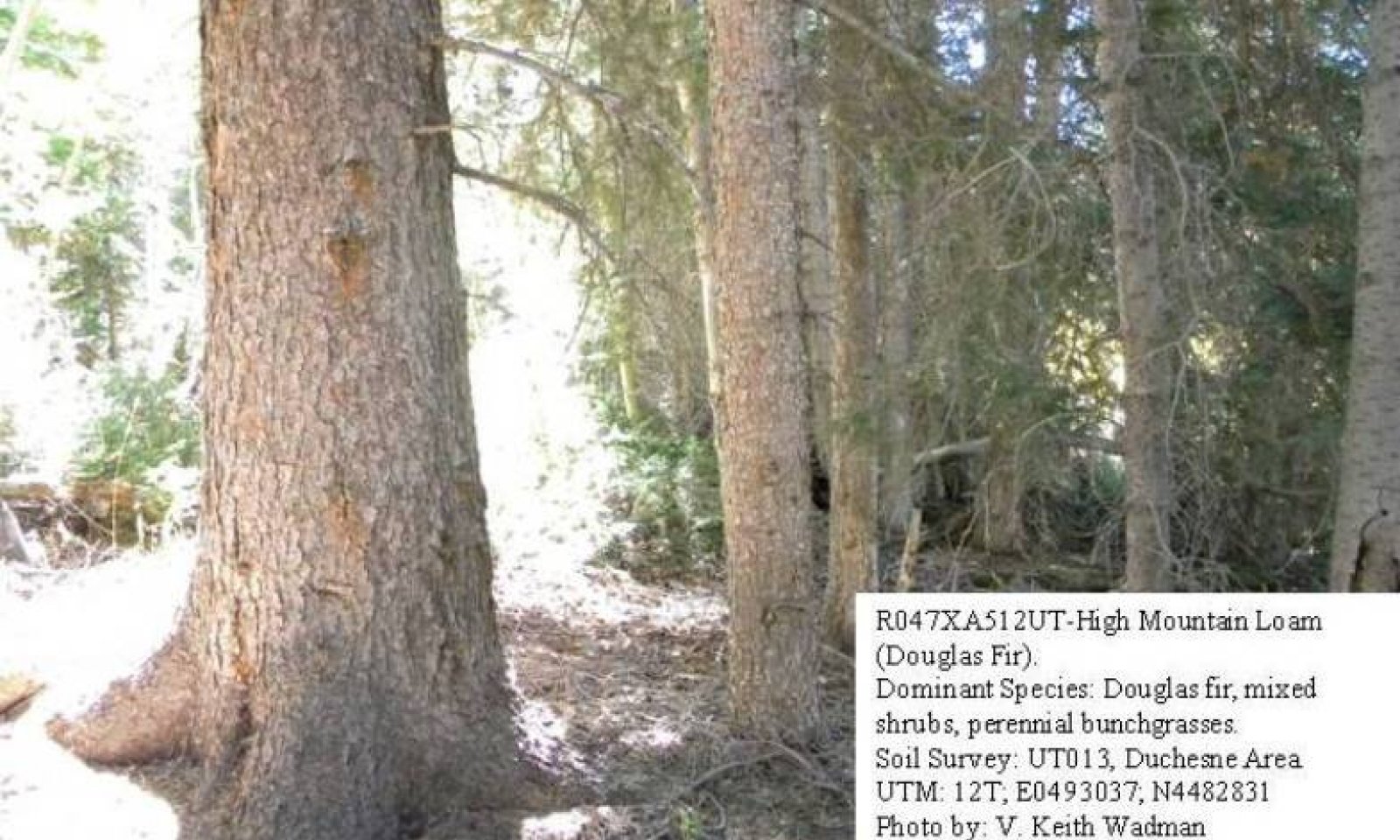

Natural Resources
Conservation Service
Ecological site F047XA512UT
High Mountain Loam (Douglas-fir)
Accessed: 12/21/2025
USC
Metric
General information
- D
- P
- A
- L
- O
Draft. A draft ecological site description is either incomplete or has not undergone quality control and quality assurance review.
Click on box and path labels to scroll to the respective text.
| T1A | - | This transition occurs when various disturbances such as road building, pipeline construction or fence-line clearing provides and opportunity for non-native species to become established. |
|---|---|---|
| T2A | - | This transition occurs when timber logging and its associated activities, including road building and skid trail development, removes mature and over-mature Douglas fir trees from the site and provides an opportunity for non-native species to increase. |
| R3A | - | This restoration pathway occurs following logging activities when the site is allowed to recover naturally. |
State 1 submodel, plant communities
| 1.1B | - | This community pathway occurs when wildfire removes the Douglas fir overstory. This event can be exacerbated by drought, insect damage or disease. |
|---|---|---|
| 1.1A | - | This community pathway occurs when fire is excluded from the plant community for long periods of time. |
| 1.2A | - | This community pathway occurs when fire is excluded from the plant community for long periods of time. |
| 1.3A | - | This community pathway occurs when fire is excluded from the plant community for long periods of time. |
| 1.3B | - | This community pathway occurs when wildfire removes the Douglas fir overstory. This event can be exacerbated by drought, insect damage or disease. |
| 1.4A | - | This community pathway occurs when insect damage or disease kills old trees and allows the community to return to a community phase 1.1 type with snags present. |
| 1.4B | - | This community pathway occurs when wildfire removed the Douglas fir overstory. This event can be exacerbated by drought, insect damage or disease. |
State 2 submodel, plant communities
| 2.1B | - | This community pathway occurs when wildfire removes the Douglas fir overstory. This event can be exacerbated by drought, insect damage or disease. |
|---|---|---|
| 2.1A | - | This community pathway occurs when fire is excluded from the plant community for long periods of time. |
| 2.2A | - | This community pathway occurs when fire is excluded from the plant community for long periods of time. |
| 2.3A | - | This community pathway occurs when fire is excluded from the plant community for long periods of time. |
| 2.3B | - | This community pathway occurs when wildfire removes the Douglas fir overstory. This event can be exacerbated by drought, insect damage or disease. |
| 2.4B | - | This community pathway occurs when insect damage or disease kills old trees and allows the community to return to a community phase 2.1 type with snags present |
| 2.4A | - | This community pathway occurs when wildfire removes the Douglas fir overstory. This event can be exacerbated by drought, insect damage or disease. |